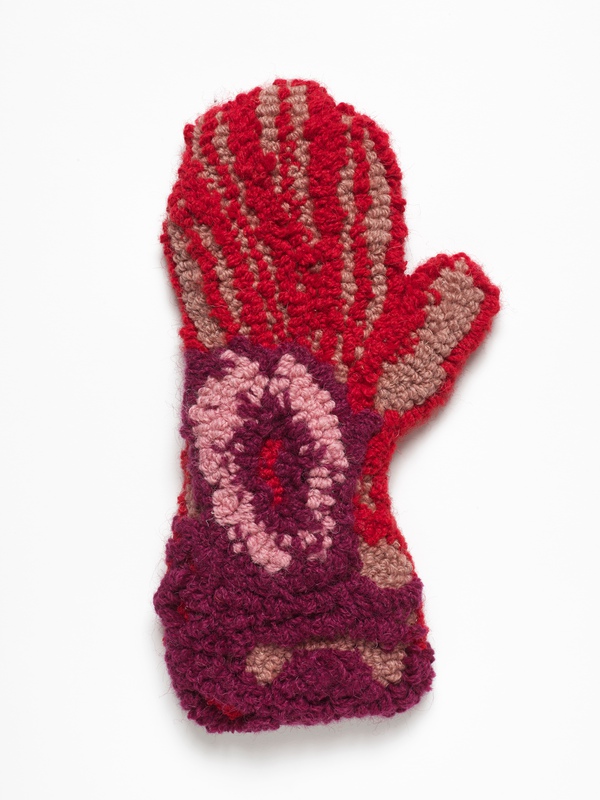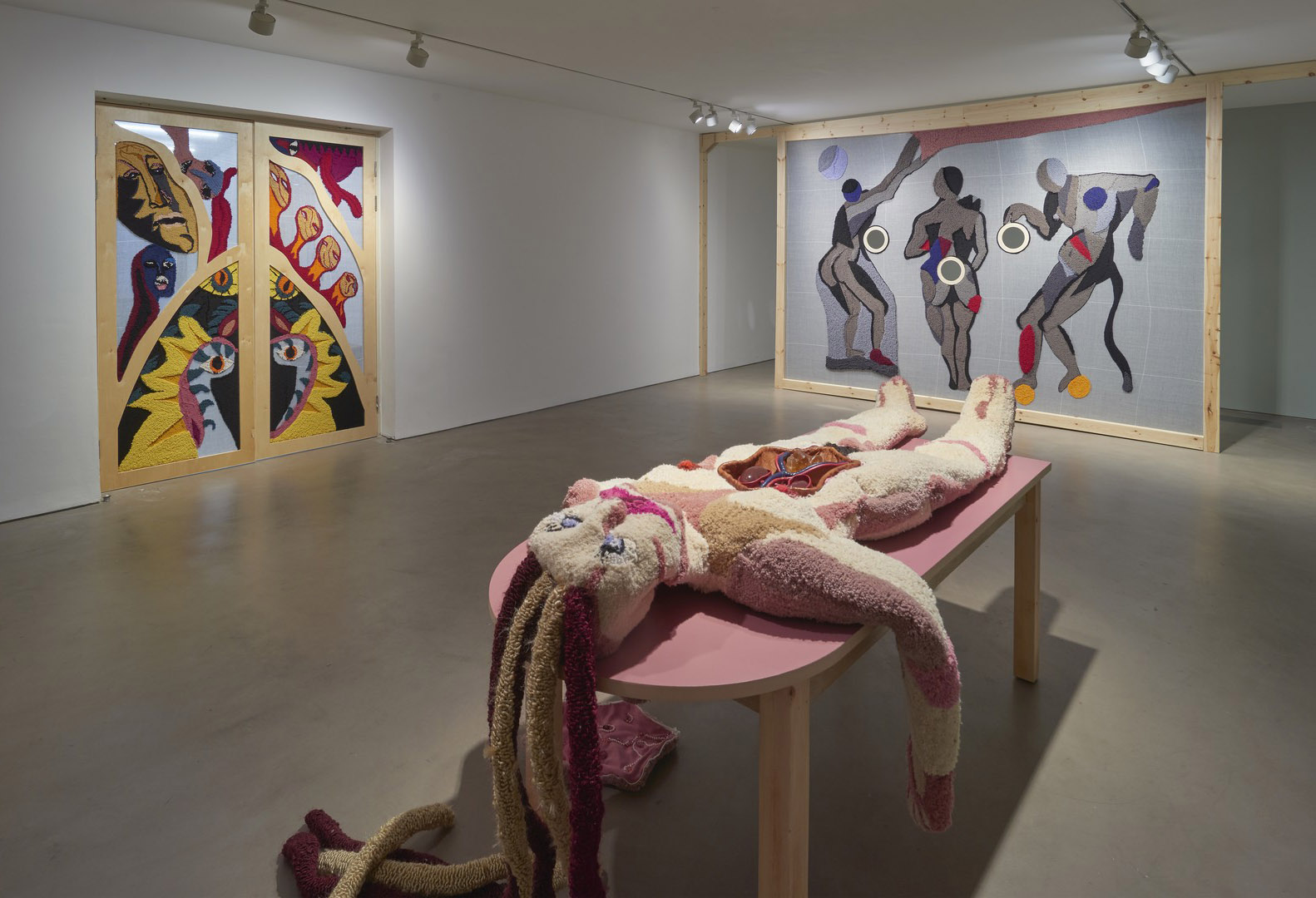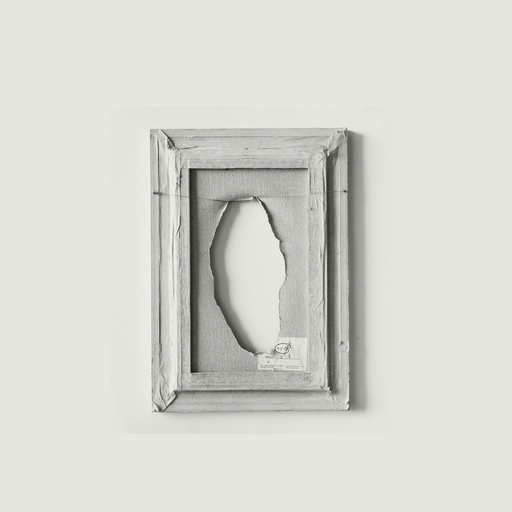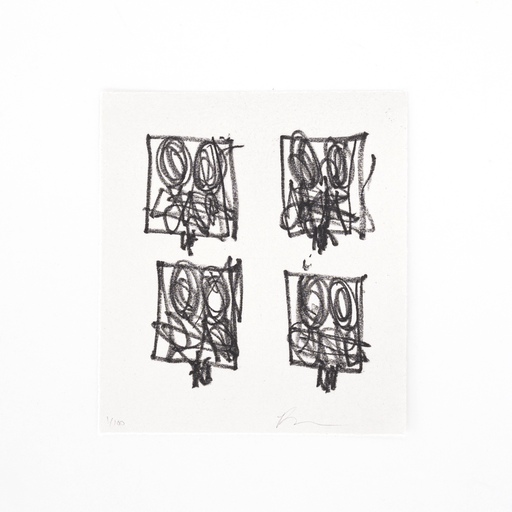In her startlingly original and vibrant work, Ukraine-born, Israel-raised, and London-based artist Anna Perach explores the dynamics between personal and cultural myths.
With diverse references including domesticity, fairy tales, psychoanalytic theory and now, in her latest show witchhood, she transforms female archetypes into multi-layerd sculptural hybrids, exploring ideas of identity, gender, and craft.
Her work engages with historical narratives through the depiction of enigmatic, often uncontrollable, female characters that dwell in the liminal spaces inside and outside of their bodies.
Her first institutional solo show in the UK, Holes, which runs at Gasworks through April 28 is her most ambitious project to-date.
Comprising fabric forms, installation and performance, the exhibition is inspired by moments throughout history when the female body has been viewed as transgressive of morality.
These moments include witch trials from the renaissance period, 17th Century anatomical Venus sculptures designed for exploration of female bodies; and the work of an 19th century neurologist Jean-Martin Charcot who treated women diagnosed with 'hysteria'.
Perach paints images, creates patterns, and then works with an intricate tufting technique, used to produce domestic textiles, to create surreal wearable sculptures or skins often used for performances.
Perach says, “The characters’ bodies are in transformation, disobeying the boundaries of the self as an impenetrable unit and, by metaphor, the boundaries of societal rules.”
In collaboration with a movement director, a sound producer, and performers, she has created a fantastically layered and multi-faceted show of work. A special edition, Touch, 2023, which actually inspired part of the exhibition is now available. We caught up with Perach before the show’s opening to ask her about her practice, her themes, and the edition which you can buy here.
Anna Perach - photographed by Andy Keate courtesy Gasworks
Tell us more about the Gasworks show
The exhibition Holes is about liminal spaces, the spaces in-between. I’m interested in transitional spaces, and also the body as a space that has that potential to transform and change things going in and out. The image of a hole appears throughout the show in a bodily way but also in a more metaphorical way. It’s the entry and exit point.
I tend to think about the work as a performance installation. There are two twenty minute performances.
The fabric sculptures are detailed and endlessly intriguing
One of the sculptures in the show is an Anatomical Venus. This was a thing in the 17th century for the purpose of medical research. The fabric body comes apart in layers and to reveal the different internal body parts.
Eventually it became a kind of fetish object, as a lot of things were added that weren’t necessary in the area of medical research. They became this ideal western beauty thing. So they would often have long blonde hair. They would have this orgasmic expression and the designers would sometimes put pearls on the bodies. They would often have a foetus but there would be no other signs of pregnancy. So it’s interesting how the whole visceral element of the body would almost completely disappear.

What are the other ideas at work in the show?
I’m interested in the threat implied by how an uncontrolled abject thing might slip. So within the show I use notions of that .
I’m interested in archetypes. I work according to my experiences or experiences I know well, often experiences that are to do with femininity. Hysteria and witchcraft and the unconscious mind do a lot more work than we understand. Through the shows I understand these connections. They become more conscious.
I’m interested in how witches were presented in the arts, historically. They were strict rules in the 17th and 18th centuries around the notion of beauty. In a sense , beauty had to be even more beautiful than nature. Artists would paint witches under the excuse of creating ugliness. Those images then fed back into culture, into what people imagined a witches’ Sabbath would look like and the horrible things that witches would do there. My current work is partly based on that and partly based on the tradition of Russian Avant Garde and the theatrical performances.
When you heard about witch trials often the women would say – presumably under a lot of pressure – that they would be visited by the Goddess Diana, and they would be taken on a night flight and arrive at the Sabbath and do horrendous things. There are a lot of perverse stories to it. But when you read a writer such as Carlo Ginzburg he talks about how before witches those stories were associated with Jewish people or with different communities, travelling communities – anyone who was different.
We tend to think about witch trials as something that happened in the Middle Ages, but they happened during the Renaissance too. When science came into place they had to kick out all that old knowledge. The women accused of witchcraft were often women such as midwives or women who worked with herbs or early forms of medicine.

Psychotherapy and neurology play a part in the construction of the show with references to the work of the notable 19th century physician Jean-Martin Charcot, what inspired that?
I have a background in psychotherapy. I worked in counselling for quite a while and within that role and experiences with mothers and women in general you hear the same stories repeated. The social or economic circumstances don‘t matter so much. The stories women tell are very similar.
Once you recognise them, those patterns may change appearance but at the core they remain the same. So my work has a bit of background in understanding that.
The 19th century neurologist Jean-Martin Charcot and his work on hysteria is something I ‘ve been working on for some time in different variations. He is famous for a lot of work including on women who had so called hysteria, which is what you see in witchcraft as well. Often these were women who just didn‘t fit into society. So the idea of the uncontrollable woman, or the uncontrolled body, is something I’m very interested in.
This has been mined in horror films such as Alien, and The Thing. The idea around the potential to have a baby is also prevalent. I’m very fascinated by that idea and how as a culture we constantly try to fight it. I try to avoid the influences of the films and I base things on my experience. I am who I am, I can’t speak for others, what I feel is me, but I use theatrical elements in my work to create an effect. There is a lot of thought that goes into it, but I want to provoke peoples’ feelings in their bodies. I don’t necessarily want the feelings to go to their minds.
 Venus, 2023. Hand tufted Axminster yarn, artificial hair, beads, artificial silk, cast and blown glass, selvedge leather, metal wire on pine, birch ply and MDF table. Exhibition view. Photo: Andy Keate
Venus, 2023. Hand tufted Axminster yarn, artificial hair, beads, artificial silk, cast and blown glass, selvedge leather, metal wire on pine, birch ply and MDF table. Exhibition view. Photo: Andy Keate
Where do you think all this springs from?
My father is very scientific. He likes structure and facts and bottom lines. He's impatient with things that are more based on feelings that you can’t point to. My mum is the complete opposite. She is about feelings.
I’m an only child and my parents are very much within those archetypes. So there’s something in me that wants to evolve from those ideas of if you can’t quantify something it doesn’t exist.
As a kid I was always drawing. I used to doodle with pens. My mum encouraged me to use pencils. I spent first years of life in Ukraine (Soviet Union) then moved to Israel then came to the UK. I’m really interested in stories. I used to rely on Slavic mythology in my work which is what I am used to from my childhood. As I built my confidence I could borrow from all influences and cultures to create hybrid characters.
 Venus, 2023. Hand tufted Axminster yarn, artificial hair, beads, artificial silk, cast and blown glass, selvedge leather, metal wire on pine, birch ply and MDF table. Exhibition view. Photo: Andy Keate
Venus, 2023. Hand tufted Axminster yarn, artificial hair, beads, artificial silk, cast and blown glass, selvedge leather, metal wire on pine, birch ply and MDF table. Exhibition view. Photo: Andy Keate
Tell us about the edition that has sprung from the show?I work somewhere between sculpture and performance. I work with a technique called tufting. I do a lot of research, a lot of thinking that is then transformed into images, often watercolors and then into something more formal - fabric. The way I work requires a lot of planning because of the technique. The end result is very tactile, I want people to want to touch the sculptures.
It’s the first edition I’ve made. With the editions it’s more of a playful thing, I try not to overthink it. The edition is much more contained, much more affordable and easier to place but essentially a representation of what I do.
The edition is similar to the gloves in my current show in London (Holes at Gasworks Gallery), but the edition features slightly smaller hands stretched on a wooden structure. It’s wall-based but it’s in a similar, tufted fabric. There are two kinds of gloves. One has the symbol of the eye and the other has a vagina.
 Extraction, 2024. Welded stainless metal chain, Axminster yarn, blown glass. Exhibition view. Photo: Andy Keate
Extraction, 2024. Welded stainless metal chain, Axminster yarn, blown glass. Exhibition view. Photo: Andy Keate
Growing up in Israel I saw a lot of eye symbols - the Hamsa - which is the Arabic symbol of the hand people hang on their door to protect them from the evil eye. The hands weren’t part of the show originally, the hands in the show actually came from the idea for an edition. Then they appeared in the show as surgical gloves. Some things just happen organically.
See more of Anna Perach's Touch, 2023 here.
 Glove, 2023. Tufted Axminster yarn, artificial leather on aluminium clamp. Exhibition view. Photo: Andy Keate
Glove, 2023. Tufted Axminster yarn, artificial leather on aluminium clamp. Exhibition view. Photo: Andy Keate

























